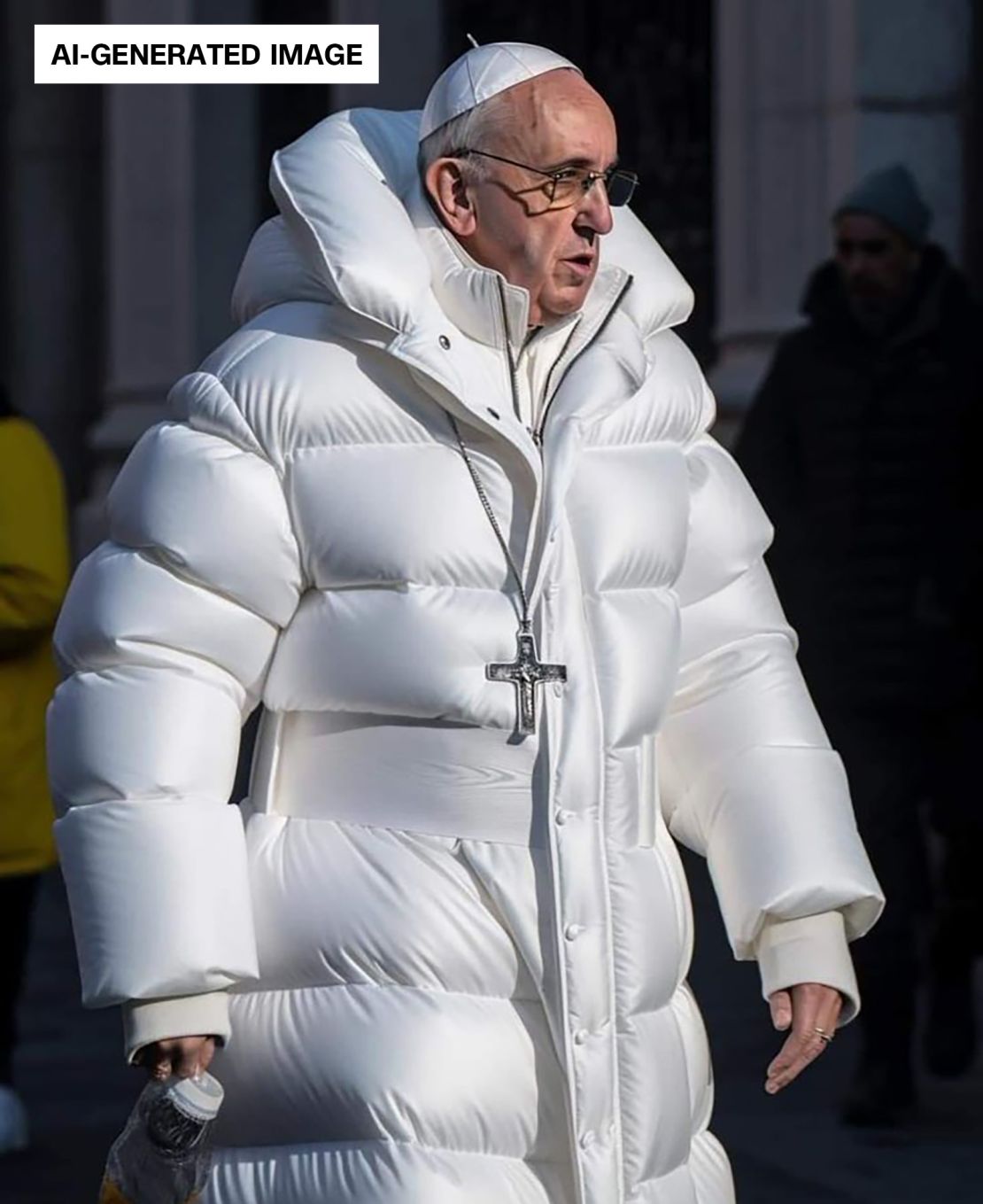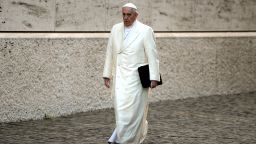CNN
—
Fashion may not be the first thing that comes to mind when thinking about papal legacies, but Pope Francis, who died Monday, had an individual sense of style — one that didn’t include a cinched Balenciaga-like white puffer jacket (that was AI), but instead, for his unfussy cream-colored cassocks and sensible black leather shoes.
Francis’ choice in footwear was first noted, just 24 hours after he was elected in 2013, by The New York Times, which observed that he had “dramatically shifted the tone of the papacy” with his black shoes — reportedly made by a friend in Buenos Aires, his hometown — and ordinary wristwatch. He quickly became known for his simple, often unadorned regalia, in contrast to his predecessor, Pope Benedict XVI, who opted for gem-encrusted pectoral crosses, bright red designer loafers and archaic accessories — among them, a traditional velvet and ermine camauro that caught attention for its resemblance to a Santa hat.
Accolades for Francis’ style soon followed: The Cut declared Francis the world’s “normcore pope” for his “simple, non-frilly” approach to dressing. He also became the first pontiff to land a Rolling Stone cover, and was dubbed by Esquire as 2013’s “Best-Dressed Man.” Not long after came the countless memes and unauthorized Etsy merch, with Francis’ likeness featured on a slew of T-shirts, sweatshirts and mugs in faux ‘90s bootleg designs.
“While Bradley Cooper, Chris Pine, and Joseph Gordon-Levitt have all had banner years, their sartorial choices begin and end on the proverbial red carpet,” wrote Esquire’s Max Berlinger. “Meanwhile, Pope Francis’s sartorial decisions have subtly signaled a new era (and for many, renewed hope) for the Catholic Church.”

The feature was one of Esquire’s best-performing stories for months, according to Berlinger, who was subsequently invited onto several morning news shows to explain his controversial decision (he declined).
“I just thought it was cool and worth mentioning,” he told CNN in a phone interview. “The Pope before him wore a lot of really ornate, expensive clothing. (Francis) was going to jails and washing the feet of prisoners. I remember thinking that this was part of a bigger shift, and that his clothes were a visual manifestation.”
Practical differences
Before the 2013 papal conclave, Francis, born Jorge Mario Bergoglio, wasn’t even considered as one of the top three frontrunners for the job. He appeared modest, humble and largely flew under the radar. But it was partly this understated demeanor, which differed so greatly to that of his predecessor, that sparked interest. “As the archbishop of Buenos Aires, Bergoglio had never been an especially gifted public speaker,” wrote Mark Binelli in the Rolling Stone’s cover story. “But now that he’s Pope Francis, his recognizable humanity comes off as positively revolutionary.”
Though Francis’ style was often read as a show of his humility or asceticism, Carol Richardson, an ecclesiastical and art historian at the University of Edinburgh, said that the two popes’ sartorial contrasts represented deeper differences in their views on their roles as head of the Catholic Church.
“Benedict XVI was playing with different periods of time through what he was wearing,” she explained in a video call. “As a traditionalist, (he was) asserting the historical continuity of the papacy.”
By appearing in early Christian chasubles (a sleeveless outer vestment worn during mass), and Ancient Roman palliums (a cloth band that loops around the neck), he was asserting “an unbroken link” from Jesus to St. Peter, the first pope, and all the way through to Benedict himself, according to Richardson.
Francis, being the first Jesuit pope, seemed to have different priorities, Richardson said, observing that Jesuits (originally known as the Society of Jesus) tend to “study languages, philosophy, and theology, history, rhetoric — it’s all about the application, the process of being a priest in the world,” she explained. “So there’s a practical application, which comes above any theoretical or historical interest.”
Style analysis
Despite Francis’ minimization of symbolism, his all-white dress did bear meaning. White and red are the primary colors of papal dress, with white representing purity and charity, and red representing compassion and sacrifice.
There are no papal requirements for footwear color, though socks have traditionally been white or red, too. (Francis wore black; Benedict, crisp white). Black, the color of his shoes, has no official symbolism, though Richardson pointed out that Franciscan friars, who preach poverty and charity, are known to wear black shoes and sandals.

“(They) probably are just the shoes that he would have worn as a priest,” she said.
When the AI-generated image of Francis dressed in high-fashion streetwear went viral, the depiction was particularly absurd for a holy leader, let alone one so modest in style. However, Richardson saw a hint of truth as to why the hoax photography resonated with internet users as much as it did.
“Although it was fake, it was still a gentle compliment to a pope who follows tradition… but also the fact that they are priests in the world as it is today,” she said. “(It’s) understanding the past and the present to move into the future.”







